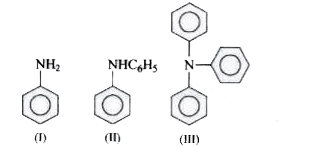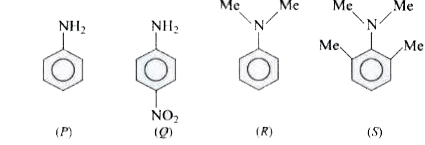Arrange the following in increasing order of basic strength : MgO,SrO,K2O,NiO,CsO2.
To arrange the oxides MgO,SrO,K2O,NiO,Cs2O in increasing order of basic strength, we need to analyze the basicity of each oxide based on the properties of the metals they are derived from.
1. Identify the Groups of Elements:
- MgO (Magnesium Oxide) comes from Group 2 (Alkaline Earth Metals).
- SrO (Strontium Oxide) also comes from Group 2 (Alkaline Earth Metals).
- K2O (Potassium Oxide) comes from Group 1 (Alkali Metals).
- NiO (Nickel Oxide) comes from Group 10 (Transition Metals).
- Cs2O (Cesium Oxide) comes from Group 1 (Alkali Metals).
2. Understand Basic Strength Trends:
- Basic strength of metal oxides generally increases down a group in the periodic table. This is due to the increase in atomic size, which leads to a decrease in ionization energy, making it easier for the metal to lose electrons and form hydroxides.
- Across a period, basic strength tends to decrease due to the increase in effective nuclear charge, which holds the outer electrons more tightly.
3. Rank the Oxides:
- Nickel Oxide (NiO): Being a transition metal oxide, it has the least basic strength due to its relatively high ionization energy and smaller atomic size.
- Magnesium Oxide (MgO): It has a higher basic strength than NiO but is less basic than the alkali metal oxides due to its smaller size compared to strontium and potassium.
- Strontium Oxide (SrO): Larger than MgO, thus it is more basic than magnesium oxide.
- Potassium Oxide (K2O): Being from Group 1, it is more basic than both MgO and SrO due to the larger size of potassium compared to magnesium and strontium.
- Cesium Oxide (Cs2O): It has the largest atomic size among these oxides, making it the most basic.
4. Final Arrangement:
- Based on the above analysis, the increasing order of basic strength is:
NiO<MgO<SrO<K2O<Cs2O
- MgO (Magnesium Oxide) comes from Group 2 (Alkaline Earth Metals).
- SrO (Strontium Oxide) also comes from Group 2 (Alkaline Earth Metals).
- K2O (Potassium Oxide) comes from Group 1 (Alkali Metals).
- NiO (Nickel Oxide) comes from Group 10 (Transition Metals).
- Cs2O (Cesium Oxide) comes from Group 1 (Alkali Metals).
- Basic strength of metal oxides generally increases down a group in the periodic table. This is due to the increase in atomic size, which leads to a decrease in ionization energy, making it easier for the metal to lose electrons and form hydroxides.
- Across a period, basic strength tends to decrease due to the increase in effective nuclear charge, which holds the outer electrons more tightly.
- Nickel Oxide (NiO): Being a transition metal oxide, it has the least basic strength due to its relatively high ionization energy and smaller atomic size.
- Magnesium Oxide (MgO): It has a higher basic strength than NiO but is less basic than the alkali metal oxides due to its smaller size compared to strontium and potassium.
- Strontium Oxide (SrO): Larger than MgO, thus it is more basic than magnesium oxide.
- Potassium Oxide (K2O): Being from Group 1, it is more basic than both MgO and SrO due to the larger size of potassium compared to magnesium and strontium.
- Cesium Oxide (Cs2O): It has the largest atomic size among these oxides, making it the most basic.
- Based on the above analysis, the increasing order of basic strength is:
NiO<MgO<SrO<K2O<Cs2O
Topper's Solved these Questions
Similar Questions
Knowledge Check
Arrange the following in increasing order of basicity.
 AI<II<IIIBIII<I<IICIII<II<IDII<III<I
AI<II<IIIBIII<I<IICIII<II<IDII<III<IArrange the following in increasing order of basicity :
 AS<Q<R<PBS<Q<P<RCS<R<P<QDP<Q<R<S
AS<Q<R<PBS<Q<P<RCS<R<P<QDP<Q<R<SArrange the following compounds in increasing order of basicity :
 AS>R>Q>PBS>R>P>QCP>Q>R>SDR>Q>P>S
AS>R>Q>PBS>R>P>QCP>Q>R>SDR>Q>P>S
Arrange the following in incrasing order of electrophilic strength:
_E01_271_Q01.png)
View SolutionArrange the haloacids in the increasing order of acid strength.
View SolutionArrange the following in the increasing order of their basic strength :
C2H5NH2,C6H5NH2,(C2H5)2NH
View SolutionArrange the following in increasing order of basic character:
MnO,MnO2,Mn2O7
View SolutionArrange the following in the increasing order of acidic strength
(i) FSO3H (ii) HCO−3 (iii) H2O (iv) HSO−4
View Solution

